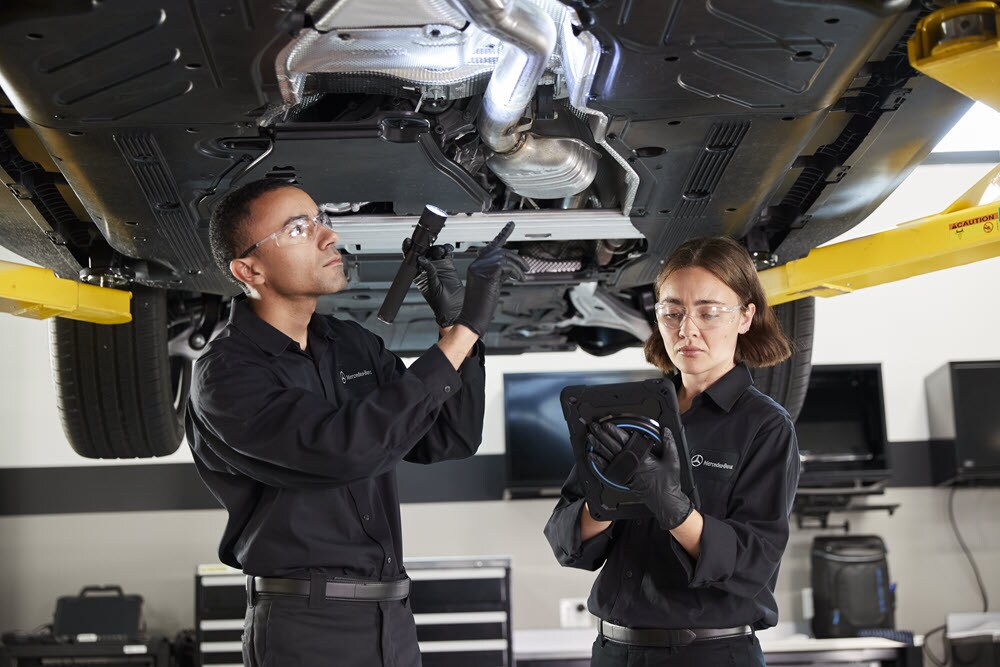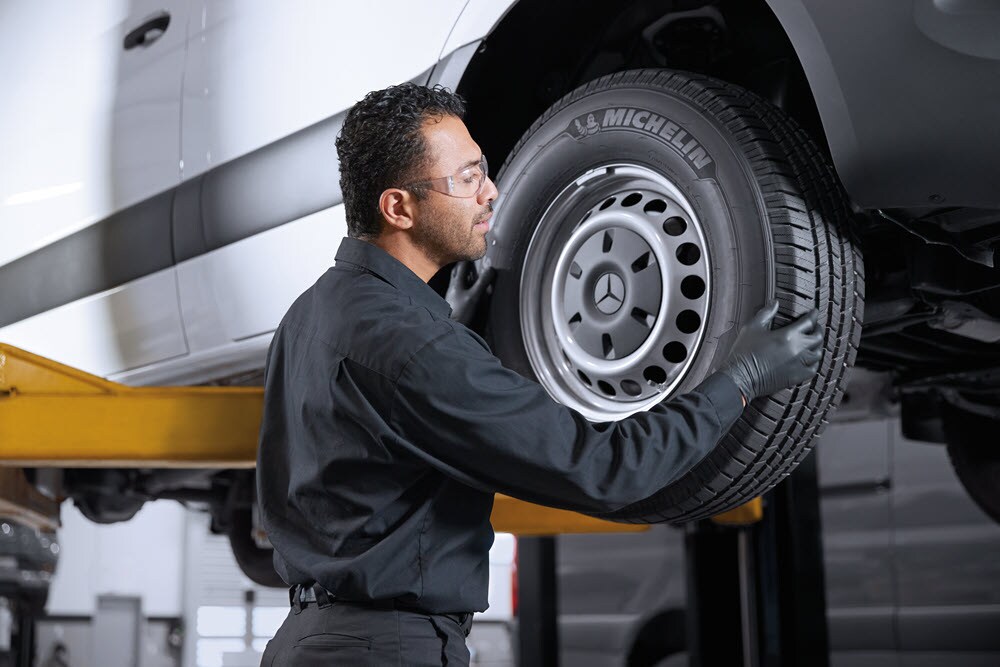Since 1934, the Knauz family and our employees have built a company dedicated to serving our customers
Sprinter Van Alignment Information
Alignment Service
Sprinter van alignment ensures proper wheel angles for safety, fuel efficiency, and tire longevity, and is recommended every 5,000-10,000 miles, or when symptoms like pulling, tire wear, or a crooked steering wheel appear. A professional alignment involves checking camber, toe, and caster angles using specialized equipment and adjusting suspension components.

Why Alignment Is Important
Safety: Correct alignment improves control and handling, contributing to a smooth and safe driving experience.
Tire Life: Proper alignment promotes even tire wear, extending the lifespan of your tires.
Fuel Efficiency: Aligned wheels reduce rolling resistance, which can improve your Sprinter's fuel economy.
Performance: A proper alignment ensures your van tracks straight and handles correctly.
When to Get an Alignment
Routine Maintenance: It is generally recommended that your vehicle's wheel alignment be checked every 5,000 to 10,000 miles. This routine check can be conveniently scheduled to coincide with oil changes, ensuring your vehicle is regularly serviced. Proper alignment helps maintain even tire wear, improves handling, and enhances fuel efficiency. Additionally, misalignment can lead to serious driving issues and increased tire replacement costs, so addressing this during regular maintenance is a proactive approach to vehicle care.
Driving on Poor Roads: If you often drive on poorly maintained roads or encounter potholes regularly, you must consider that you may require more frequent alignment checks. These rough driving conditions can significantly impact your vehicle's suspension and steering systems, leading to misalignment. When your wheels are misaligned, it can result in uneven tire wear, decreased fuel efficiency, and compromised handling. Therefore, having your alignment inspected more often under these circumstances can help ensure safer driving and extend the lifespan of your tires.
Vehicle Modifications: Modifications to the suspension system, like raising the van to increase ground clearance, necessitate a comprehensive realignment of the vehicle's wheels. This process ensures the axle angles are correctly adjusted to maintain optimal handling, tire wear, and overall driving performance. It's essential that after any suspension alteration, the alignment is thoroughly checked and recalibrated to support safe and efficient operation on various terrains.
Symptoms: Pay close attention to indicators of potential issues, such as a vehicle that tends to drift or pull to one side while driving. Additionally, inspect the tires for uneven wear patterns, which can signal alignment problems. A crooked or misaligned steering wheel is another telltale sign of underlying issues. Furthermore, a loose steering wheel may indicate wear and tear on the components, impacting your control and safety.


What to Expect During an Alignment
Vehicle Setup: The van is carefully positioned on a state-of-the-art four-wheel alignment machine, ensuring precision and stability.
Angle Measurement: Highly skilled technicians meticulously measure the camber, toe, and caster angles using advanced tools, ensuring every detail is recorded accurately for optimal performance.
Adjustment: Based on the measurements obtained, the technicians make precise adjustments to the suspension system and wheels, carefully aligning them to adhere to the manufacturer's exact specifications for optimal handling and safety.
Inspection: Along with the alignment adjustments, this comprehensive service includes a complimentary multi-point inspection, where technicians thoroughly evaluate various vehicle systems, and a detailed tire tread analysis to ensure the van's overall safety and efficiency on the road.
Sprinter Tire Rotation Information
When it comes to maintaining your Sprinter van, regular tire rotation is crucial for ensuring optimal performance and longevity. For models equipped with Rear-Wheel Drive (RWD) and All-Wheel Drive (AWD/4WD), it is recommended to rotate the tires every 5,000 to 7,500 miles. However, if you own an AWD/4WD model that endures heavy-duty usage-such as towing significant loads or navigating through tough terrains-you may need to adjust your rotation schedule, with some experts advising rotations as frequently as every 3,000 to 5,000 miles.
To perform the rotation correctly, be sure to follow the appropriate tire pattern based on your drive system. For RWD and 4WD vehicles, you should cross the front tires to the opposite rear while allowing the rear tires to remain on the same side as they move forward.
Always refer to your Sprinter's owner's manual for the specific tire rotation pattern and recommended intervals tailored to your vehicle. Consideration of driving style, load, and road conditions can greatly influence tire wear, making it crucial to stay attentive to these factors for the best care of your vehicle.

-
Knauz Continental Autos
409 Skokie Valley Hwy.
Lake Bluff, IL 60044
- Sales: (847) 235-3800
 AdChoices
AdChoices